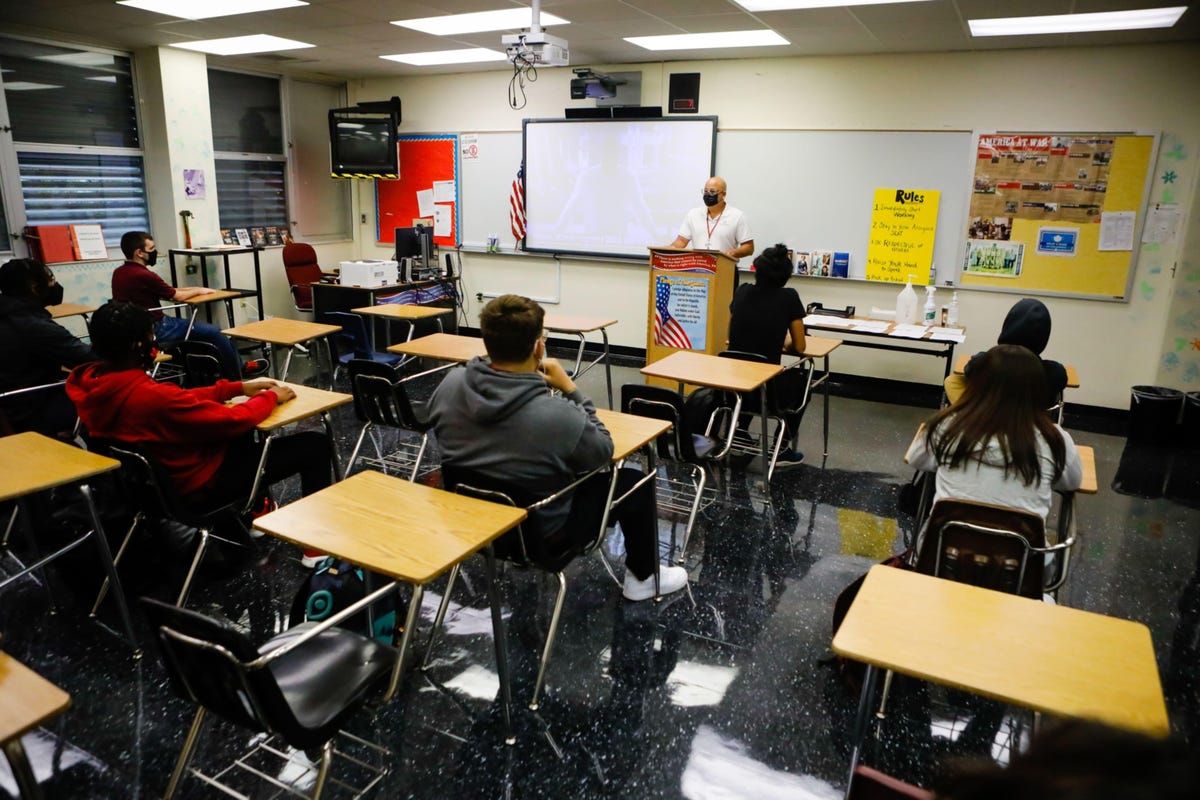
Historic amounts of federal relief funds are poised to aid school recovery. To shift current … [+]
Learning Loss? Interrupted Learning? Call it what you want. The important question is, “What we do next to support students?”
A report on student progress conducted by Curriculum Associates provides a disheartening snapshot of student learning in the fall – when many students were just returning to school buildings. Researchers reviewed diagnostic scores from more than nine million students around the country and found that the number of students performing two or more grade levels below their actual grade level was greater than before the pandemic. In practical terms, we have more second graders performing at kindergarten or even pre-K levels than we did two years ago.
The challenges were most pronounced for students in schools serving mostly Black and Latino students, as well as for students in schools in lower-income zip codes.
Even before the pandemic, there were signs that too many students were struggling. The 2020 National Assessment of Educational Progress (NAEP) Long-Term Trend (LTT) assessment— taken before the pandemic—indicated widening achievement levels between our lowest and highest performers.
Cindy Marten, deputy secretary of Education, noted recently during a congressional hearing, “the pandemic has both shone a light on and exacerbated the existing challenges in our education system.”
Looking ahead, it will be important to stay focused on the task of providing academic supports to our students, rather than getting bogged down by distracting debates.
Historic amounts of federal relief funds are poised to aid recovery. To shift the current performance trajectory, we must ensure this money is used wisely and targeted to support our most vulnerable students.
Here are a few priorities for achieving that systemic change:
MORE FOR YOU
· A new commitment to the use of data to help parents, educators and policymakers track student recovery and align resources to best address students’ academic needs. Simply giving tests is not enough, we must help educators, schools, and decision-makers at all levels act on the data.
· Attention to the widespread adoption, training and use of high-quality instructional materials, to include those that use the science of reading to improve reading instruction. And we must specifically launch a greater focus on math achievement for all students of color and all students experiencing poverty, to include the delivery of algebra at the appropriate time and in a manner that gives those students the best opportunity of success.
· Attending to the needs of our most vulnerable students in every decision we make affecting schools, including specific efforts to accelerate learning, as well as efforts to meet their social and emotional needs.
I’m excited to be joining the Center on Reinventing Public Education and the Edunomics Lab at Georgetown University in an effort to identify and promote strong examples of how states are making the most of the recovery funds.
It will take commitment and discipline to stay focused on what matters to support students. But we owe it to all students to ensure they get the education they deserve.




